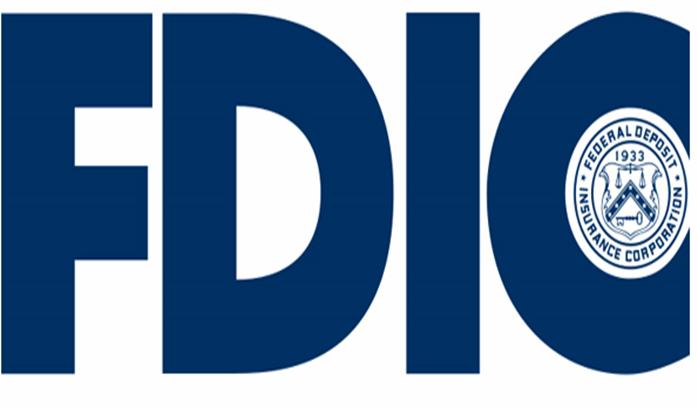FDIC Releases National Survey of Unbanked and Underbanked
FDIC’s Committee on Economic Inclusion to Discuss Strategies to Expand Access
The Federal Deposit Insurance Corporation (FDIC) today released the results of its 2011 National Survey of Unbanked and Underbanked Households, the most comprehensive survey on the unbanked and underbanked in the United States. The survey indicates that more than one in four U.S. households (28.3%) are either unbanked or underbanked, a slight increase from the findings of the FDIC’s 2009 inaugural survey. 1 The survey, conducted every two years by the FDIC in partnership with the U.S. Bureau of the Census, provides the banking industry and policy makers with insights and guidance on the demographics and needs of the unbanked and underbanked.
According to the 2011 Survey, 821,000 more U.S. households have become unbanked since the first survey in 2009, representing a 0.6 percentage point increase. More than half of all unbanked households said they do not have an account because they believe they do not have enough money or that they do not need or want an account. In addition, the report shows that three in ten households nationally do not hold a savings account.
“The results of the 2011 National Survey of Unbanked and Underbanked Households indicate that insured financial institutions have an important chance to grow their customer base by expanding opportunities that bring unbanked and underbanked individuals into mainstream banking” said FDIC acting chairman Martin J. Gruenberg.
Other key findings of the survey include:
- 8.2 percent of U.S. households are unbanked. This represents one in 12 households in the nation, or nearly 10 million in total. Approximately 17 million adults live in unbanked households.
- 20.1 percent of U.S. households are underbanked. This represents one in five households, or 24 million households with 51 million adults.
- 29.3 percent of households do not have a savings account, while about 10 percent do not have a checking account. About two-thirds of households have both checking and savings accounts.
- One-quarter of households have used at least one alternative financial service (AFS), such as non-bank check cashing or payday loans in the past year, and almost one in ten households have used two or more types of AFS products or services. In all, 12 percent of households used an AFS in the past 30 days, including four in 10 unbanked and underbanked households.
“There are many positives to establishing a relationship with an insured financial institution. Access to an account at a federally insured institution provides households with the opportunity to conduct basic financial transactions, build wealth, save for emergency and long-term security needs, and access credit on fair and affordable terms,” Gruenberg said.
In conjunction with today’s release of the National Survey at the FDIC Advisory Committee on Economic Inclusion, a panel of financial services providers and experts will discuss the work they are doing to promote safe banking accounts. (Learn more at www.economicinclusion.gov.) Also, a representative of the Bank-On movement will talk about efforts by Bank-On institutions to provide safe banking accounts and other strategies to better serve low- and moderate-income consumers.
Links to the survey below…
- Read the 2011 Executive Summary – PDF
- Read the 2011 Full Report – PDF
- Read 2011 Appendices A-G – PDF
- Read 2011 Detailed State and MSA Tables (Appendices H-I) – PDF
- Read 2011 FDIC Technical Notes (Appendix E) – PDF
- Read 2011 FDIC Survey Instrument (Appendix G) – PDF
SOURCE: http://www.fdic.gov/
~


We need to seize the FED…RECOVER OUR STOLEN WEALTH…We need referendums on the 2012 ballot to restore the U.S. CONSTITUTION…ISSUE OUR OWN CURRENCY…WE NEED STATE BANKS…WE NEED TO PRIVATIZE OUR WEALTH..and ABOLISH OBAMACARE…
The politicians would have us believe jobs will save America…The truth is….no amount of jobs can bailout these bankrupt entities…They created a quadrilllion dollars in derivatives debt fraud….that can never be repaid…! We are ALL working our rearends off for pretty much nothing..Time to stop paying the crooks and seize the FED…ISSUE OUR OWN CURRENCY VIA STATE BANKS…and PRIVATIZE OUR WEALTH. The FED IS A CREDIT SYSTEM…IT IS NOT A MONETARY SYSTEM. THE FED CREDIT SYSTEM IS…… THE MICROCHIPPED MARK OF THE BEAST.
They are slowly turning us into microchipped slaves (OBAMACARE) to the debt of bankrupt institutions.
We don’t have the right kind of Banks, but plenty of Banksters including pay day loan sharks, which simply steal money from poorer people. The FDIC could do the public a better service by recommending that millions of households resist or end any relationship with TBTF.